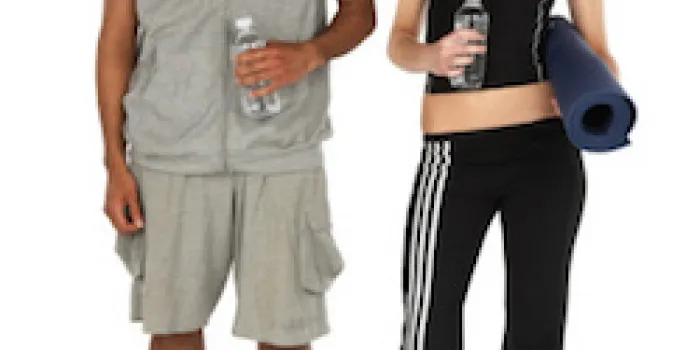Skip the gym, now you can exercise the do-it-yourself way at home using bodyweight exercises. Bodyweight exercises, which include pushups and situps, build muscle, burn calories and boost your heart health. Plus, your workout won’t cost you a dime. Such exercises require only the weight of your own body, rather than barbells or other weight training equipment. These are all good reasons why the American College of Sports Medicine predicts that bodyweight training will be the No. 1 fitness trend in 2015.
For people with bleeding disorders, bodyweight exercises can be beneficial. They increase strength, and the stronger your muscles, the better they can protect your joints from bleeds.
Follow your PT’s lead
Before beginning a bodyweight exercise program, check in with your health team at your hemophilia treatment center (HTC), especially your physical therapist (PT). The staff can help you plan a workout that matches your abilities and won’t tax your joints.
“Your PT knows you and knows whether, for example, squats are going to be difficult for you because of knee or ankle problems,” says Kim Baumann, MPT, of the Center for Bleeding and Clotting Disorders at the University of Minnesota Fairview Medical Center in Minneapolis. You will also learn how to do each exercise correctly. “You need to practice proper body mechanics to avoid injury,” she says. “For example, if you do a squat and let your knees go past your toes, you’re putting tremendous pressure on your knees.“ Such pressure can cause joint injuries or even bleeds.
There are many different bodyweight exercises you can do, each of which can be modified to match your fitness and abilities. First, focus on exercises that are comfortable for you. “As you adapt to your new workout, you can vary it to make it more challenging,” says Heidi Purrington, PT, of the Hemophilia and Thrombosis Center at Phoenix Children’s Hospital in Arizona. For example, if you’re new to exercise, you may need to start with functional exercises. These include sit to stand, reaching into cupboards, stepping sideways along the counter in the kitchen, or leaning forward and to the sides and back while sitting. Your PT can help you decide how many to start with and what goals you should set
For a simple exercise you can do every day, Purrington recommends stand-up/sit-downs. With your hands at your sides, sit in a chair, stand up and then sit back down. Repeat. You can vary the difficulty by using a higher or lower chair, not using your arms to help and increasing the number of repetitions you perform.
“You can also use bodyweight exercises to improve your balance,” says Baumann. Single-leg stands involve lifting one foot, bending your knee and holding your foot a few inches off and perpendicular to the floor for a half-minute or so. Once you feel comfortable doing them on a solid surface, try standing on a pillow. For a real challenge, do them with your eyes closed. You can even do single-leg stands while brushing your teeth.
Modifying and adjusting
Bodyweight exercises can also be modified to work around problem joints. “There are lots of ways to do strength training, even if you have limitations,” says Baumann. For instance, if you like pushups but have bad elbows, adjust how low you go or do them against the wall. The same goes for how low you squat.
Go slowly when you get started. Together with your PT, plan when to take each exercise to the next level. Too much too soon may cause an injury that knocks you out of commission.
If you have the time, do a whole workout every other day. Otherwise, do a little bit of your routine every day; dividing it into chunks of time that fit your schedule. Try alternating between upper-body exercises like shoulder shrugs, lower-body exercises such as squats and core exercises, which include situps and planks, says Baumann.
Work some variety into your workout. That way, you keep things interesting as you continue to challenge yourself. Purrington shares pages of exercises with some of her patients. She recommends they choose one or two exercises from each page for each session. Just be sure to give each major muscle group at least a day between workouts.
Although bodyweight exercises require no special equipment, you will need a good pair of shoes. Running or cross-training shoes provide joint support and prevent falls. Also, consider a yoga mat, especially if you like to exercise outdoors or on a slippery hardwood floor.
Look for the first signs of progress in just a few weeks. Soon you’ll be doing a few more repetitions of each exercise. In addition, everyday activities like walking to the park with your kids will become noticeably easier. In a few months, exercise will become a more natural part of your daily routine, says Purrington. Plus, your mental health will improve. “The more you exercise, the better you will feel about things in general,” she says.
Learn More
For videos of several bodyweight exercises, visit Mayo Clinic.
For a comprehensive selection of beginner bodyweight exercises, visit Ace Fitness’s Exercise Library.

